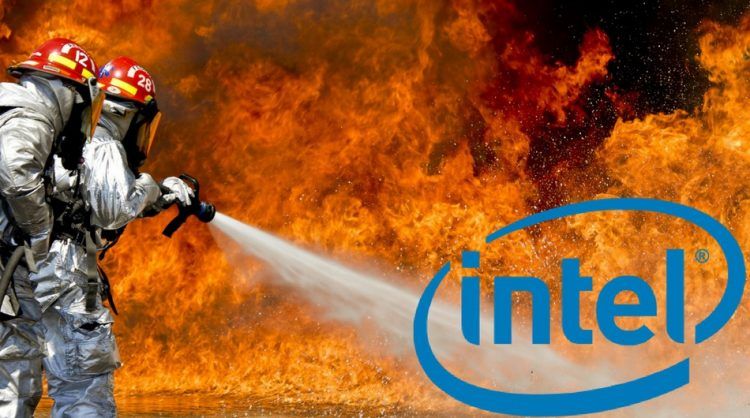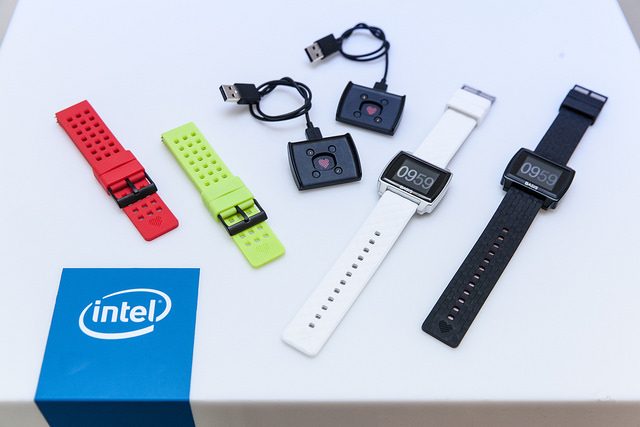
Original photo by Pexels.
You may never again see a wearable gadget from Intel. Not in the near future, at least. The global tech giant is pulling the shutter on its wearable gadget initiative after it had to do a mass recall of Peak smartwatches, multiple sources in the company confirmed.
The smartwatches were developed by Basis Science, a Silicon Valley startup acquired by Intel in 2014 and integrated into its New Devices Group (NDG).
After failing to take on competition in the smartphone space, the global giant shifted its focus to IoT and wearable devices. Intel made its biggest bet to disrupt the wearable tech space with the acquisition of Basis Science. But in June this year, it it stopped the sale of Peak and recalled the flagship product from Basis, after users reported of blisters and burns due to overheating of the device.
Responding to a Tech in Asia questionnaire, the company said, “Intel is in no way stepping back from the wearables business. In fact, we have several products in the works that we are very excited about, as well as prior launches that highlight our wearable technology such as the TAG Heuer Connected watch and recent Oakley Radar Pace smart eyewear.” The spokesperson did not want to respond to questions regarding Basis, Ruby, and the NDG layoffs “at this time.”
However, several sources in the Basis team and in Intel said the fate of the New Devices Group (NDG), conceived as a unit designed to support the chipmaker’s wearable ambitions, is now under the guillotine. About 80 percent of the team has been informed about an imminent layoff by year-end, according to two Intel staff members, who spoke to Tech in Asia on the condition of anonymity because they are not authorized to talk to the media.
Incidentally, that’s also the time when Intel intends to withdraw the proprietary software for Peak, and stop developing it altogether. Intel informed its users of this change during the recall.
About 80 percent of the team has been informed about an imminent layoff by year-end.
As a result, the development of Basis’s much-awaited new product – Ruby – has also been suspended, sources said. Ruby would have been Basis’s first major product after Peak. It was set to be a smaller watch, designed to take on Fitbit’s Charge 2. A revamped version of the Basis software was expected with it. Originally developed for female users, the Ruby was eventually meant to be positioned more broadly.
Senior executives in Intel told Tech in Asia that the company will step away from the wearables business for the time being, and would rather train its focus on AI and VR-based products.
What went wrong
In June, Intel and Basis advised users to stop wearing the Peak smartwatch and to avoid using the charging cradle, which some owners had suggested was overheating and even melting.
Sources said the problem was an active LED in the back of the Basis Peak smartwatch that continuously monitors the wearer’s heart rate.
The company tried to work on a software update to fix the issue, but that attempt failed. Intel declined to comment on Tech in Asia’s query on why the update didn’t work. A source in the Basis team said that the update was never released because it would have meant compromising a majority of Peak’s features.
Eventually, in August, Intel sent emails to its users asking them to return all models of Peak devices and accessories. Unlike Samsung, when it was hit by the Note 7 mishap, Intel wasn’t offering a replacement, but a refund – a drastic move for a company that was basing its success in the wearable tech space on that very product.
“This was a tough decision, but your safety is our top priority,” Josh Walden, senior vice president and general manager of Intel’s new technology group, wrote in an email sent to Peak users.
The Silicon Valley giant is refunding its users with sales tax and shipping cost, over and above the unit price. Intel will take a significant cost hit as a result of the recall. Although the company did not specify how many units it had sold, Intel will have to pay anywhere between US$139 and US$199 for each watch. On every Titanium version of the watch, Intel will have to refund US$299. The refund will also include any cost incurred on accessories.

Photo credit: Flickr.com.
Chink in the armor
This is not the first time a wearables company has had to recall a product. Fitbit halted sales of its Force wristband in 2014 after complaints surfaced that some customers were experiencing skin rashes from the rubberised bracelet. Jawbone was forced to recall an earlier version of its UP bracelet in 2011.
But Intel doesn’t seem inclined to bounce back from Basis’s downfall. This is the third consecutive failure Intel has suffered in its efforts to move ahead in the wearable tech market. Earlier this year, the company stopped the development of the SoFIA smartphone processor and also cut back on Atom chips that were primarily used for smartphones and wearables, casting a shadow upon Intel’s future in the space.
Intel will have to pay anywhere between US$139 and US$199 for each watch.
Intel has powered wearables from Fossil and Tag Heuer with its technology. But the company’s only mainstream wearable that had any sort of popularity was through its acquisition of Basis. But Intel did not integrate the Basis watch with its own processor called Curie.
Curie is a button-sized chip that Intel developed to power wearable devices. Intel tried to popularize the chip by associating it with the fashion industry. The tiny chip can fit inside a wearable device while retaining the power of a computer. Among other initiatives, Intel put the chip in Chromat’s smart sports bra – it opens air vents when the wearer’s body reaches a certain temperature.
However, the fashion tech relationship is still in its infancy and Intel hasn’t secured any big win in the space. “Intel’s wearable strategy has been all show and no substance. Intel really doesn’t have the right mindset or technology to go after the wearables marketplace. Only a small subset of wearable devices have high value and that segment of the market doesn’t have high volume. This does not make sense for a business that Intel would do well in,” Tirias Research principal analyst Kevin Krewell said.
The Basis purchase was described by the company at the time mainly as a way of acquiring intellectual property and expertise in the field, rather than an attempt to build a major consumer products business. “As we accelerate our position in wearables, we will build upon this foundation to deliver products that bring people greater utility and value,” Mike Bell, Intel vice president and general manager of the company’s New Devices Group, had said during the acquisition of Basis.
Basis Peak was considered to be a leader in sensor technology, when compared with its competitors such as Garmin, Polar, and FitBit watches. The Peak constantly tracks your steps, calories, and heart rate, and also sweat levels and skin temperature. These data points can be used to paint an accurate picture of calorie burn, and even sleep patterns.
Intel was interested in that. An analyst who didn’t want to be named due to the sensitivity of information said Intel was not committed to market the Basis brand at all. “It was interested in the features that Basis Peak had, to leverage it in other products,” she said.

Photo credit: 123rf.
Does Intel have a chance?
Intel’s competitors have been striding ahead in wearable tech. The Apple Watch created waves. Qualcomm has also demonstrated success as a supplier in the wearables market over the past two years. The company currently has over 100 design wins, including over 80 percent of Android Wear smartwatches by Samsung, LG, Huawei, and others.
What Qualcomm probably did right was to build its own wearable, the Qualcomm Toq, as a proof of concept. It helped the company learn from this early design and incorporate that in its future products. Qualcomm now has a considerable portfolio of wearable chips, including the Snapdragon Wear 2100 and 1100 for watches, that can fit into a range of devices, from a fitness tracker all the way up to a high-end VR headset.
Intel too has won several design patents in the AR segment. But Intel’s overall future in the wearable space is vulnerable after it canceled the Atom, SoFIA, and Broxton chips. A company source informed Tech in Asia that the company may power future wearables with its Apollo Lake processor instead.
Microsoft’s VR headset HoloLens uses an Intel processor, but it doesn’t have any significant volume right now, as it’s priced out of the reach of many consumers.
Intel can revive its presence in the wearable technology space with new innovations in the future. But it’s the end for Basis, with no room left to improve on its existing product or to develop a new generation device, after having to shut down all supporting infrastructure. The startup was one of the early players in the wearable tech space, but just never found solid ground.
This post https://www.techinasia.com/intel-big-wearable-gadget-flop appeared first on Tech in Asia.
from Tech in Asia https://www.techinasia.com/intel-big-wearable-gadget-flop
via IFTTT
No comments:
Post a Comment